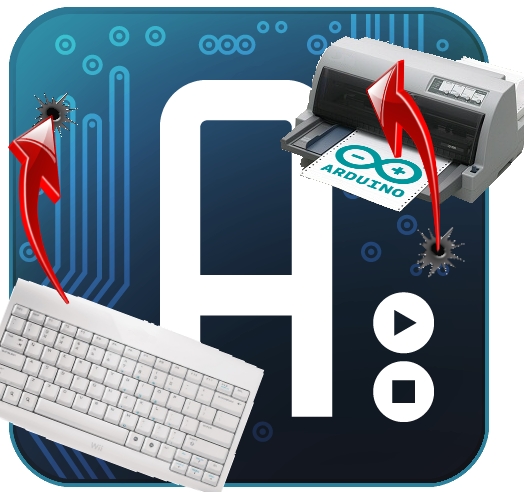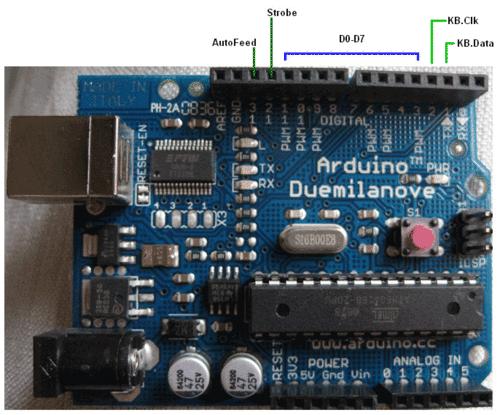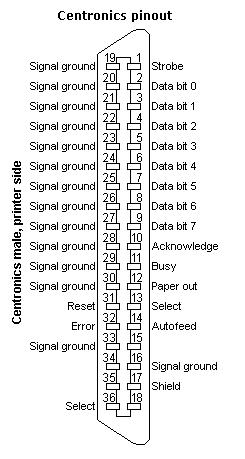- makeITcircular 2024 content launched – Part of Maker Faire Rome 2024Posted 2 weeks ago
- Application For Maker Faire Rome 2024: Deadline June 20thPosted 2 months ago
- Building a 3D Digital Clock with ArduinoPosted 7 months ago
- Creating a controller for Minecraft with realistic body movements using ArduinoPosted 7 months ago
- Snowflake with ArduinoPosted 8 months ago
- Holographic Christmas TreePosted 8 months ago
- Segstick: Build Your Own Self-Balancing Vehicle in Just 2 Days with ArduinoPosted 8 months ago
- ZSWatch: An Open-Source Smartwatch Project Based on the Zephyr Operating SystemPosted 9 months ago
- What is IoT and which devices to usePosted 9 months ago
- Maker Faire Rome Unveils Thrilling “Padel Smash Future” Pavilion for Sports EnthusiastsPosted 10 months ago
Arduino typewriter
Patel Sohil Sanjaybhai wants to partecipate to our iniziative “TiDiGino Contest”, sent us his application with Arduino to demonstrate his skills in this field: an Arduino Typewriter.
This project shows how to recycle an old PS2 keyboard and a dot matrix printer (DB25) to make a typewriter.
How works:
The idea is connect the keyboard to the printer with a basic and cheap interface, we have used Arduino because is a fast development board for this kind of projects. The board read the keyboard signals (use a data/clock system) and transform this info about the character to the printer.
Code:
#include <PS2Keyboard.h>
#include <string.h>
#include <stdio.h>
#define KBD_CLK_PIN 3
#define KBD_DATA_PIN 2
#define d0 4
#define d1 5
#define d2 6
#define d3 7
#define d4 8
#define d5 9
#define d6 10
#define d7 11
#define strobe 12
#define autofd 13
PS2Keyboard keyboard;
int caracter = 0;
byte key=0;
void setup()
{
keyboard.begin(KBD_DATA_PIN);
pinMode(d0, OUTPUT);
pinMode(d1, OUTPUT);
pinMode(d2, OUTPUT);
pinMode(d3, OUTPUT);
pinMode(d4, OUTPUT);
pinMode(d5, OUTPUT);
pinMode(d6, OUTPUT);
pinMode(d7, OUTPUT);
pinMode(strobe, OUTPUT);
pinMode(autofd, OUTPUT);
digitalWrite(autofd,HIGH);
digitalWrite(strobe,HIGH);
Serial.begin(9600);
delay(1000);
}
void transmit(int x)
{
if (x >= 128)
{
x = x - 128;
digitalWrite(d7,HIGH);
}
else
{
digitalWrite(d7,LOW);
}
if (x >= 64)
{
x = x - 64;
digitalWrite(d6,HIGH);
}
else
{
digitalWrite(d6,LOW);
}
if (x >= 32)
{
x = x - 32;
digitalWrite(d5,HIGH);
}
else
{
digitalWrite(d5,LOW);
}
if (x >= 16)
{
x = x - 16;
digitalWrite(d4,HIGH);
}
else
{
digitalWrite(d4,LOW);
}
if (x >= 8 )
{
x = x - 8;
digitalWrite(d3,HIGH);
}
else
{
digitalWrite(d3,LOW);
}
if (x >= 4)
{
x = x - 4;
digitalWrite(d2,HIGH);
}
else
{
digitalWrite(d2,LOW);
}
if (x >= 2)
{
x = x - 2;
digitalWrite(d1,HIGH);
}
else
{
digitalWrite(d1,LOW);
}
if (x >= 1)
{
digitalWrite(d0,HIGH);
}
else
{
digitalWrite(d0,LOW);
}
digitalWrite(strobe,LOW);
delayMicroseconds(2);
digitalWrite(strobe,HIGH);
}
void loop()
{
if(keyboard.available())
{
byte c = keyboard.read();
Serial.println(c);
// byte c=Serial.read();
ascii(c);
if(c == 13)
{
Serial.println(key);
transmit(10);
}
else
{
Serial.println(key,HEX);
transmit(key);
}
// Serial.println(c,HEX);
}
}
void ascii(byte x)
{
switch(x)
{
case 0x1c:
{
key=0x41;
break;
}
case 0x32:
{
key=0x42;
break;
}
case 0x21:
{
key=0x43;
break;
}
case 0x23:
{
key=0x44;
break;
}
case 0x24:
{
key=0x45;
break;
}
case 0x2B:
{
key=0x46;
break;
}
case 0x34:
{
key=0x47;
break;
}
case 0x33:
{
key=0x48;
break;
}
case 0x43:
{
key=0x49;
break;
}
case 0x3B:
{
key=0x4A;
break;
}
case 0x42:
{
key=0x4B;
break;
}
case 0x4B:
{
key=0x4C;
break;
}
case 0x3A:
{
key=0x4D;
break;
}
case 0x31:
{
key=0x4E;
break;
}
case 0x44:
{
key=0x4F;
break;
}
case 0x4D:
{
key=0x50;
break;
}
case 0x15:
{
key=0x51;
break;
}
case 0x2D:
{
key=0x52;
break;
}
case 0x1B:
{
key=0x53;
break;
}
case 0x2C:
{
key=0x54;
break;
}
case 0x3C:
{
key=0x55;
break;
}
case 0x2A:
{
key=0x56;
break;
}
case 0x1D:
{
key=0x57;
break;
}
case 0x22:
{
key=0x58;
break;
}
case 0x35:
{
key=0x59;
break;
}
case 0x1A:
{
key=0x5A;
break;
}
case 0x0D:
{
key=0x09;
break;
}
case 0x29:
{
key=0x20;
break;
}
default:
{
}
}
}
| |
Library |





















2 Comments